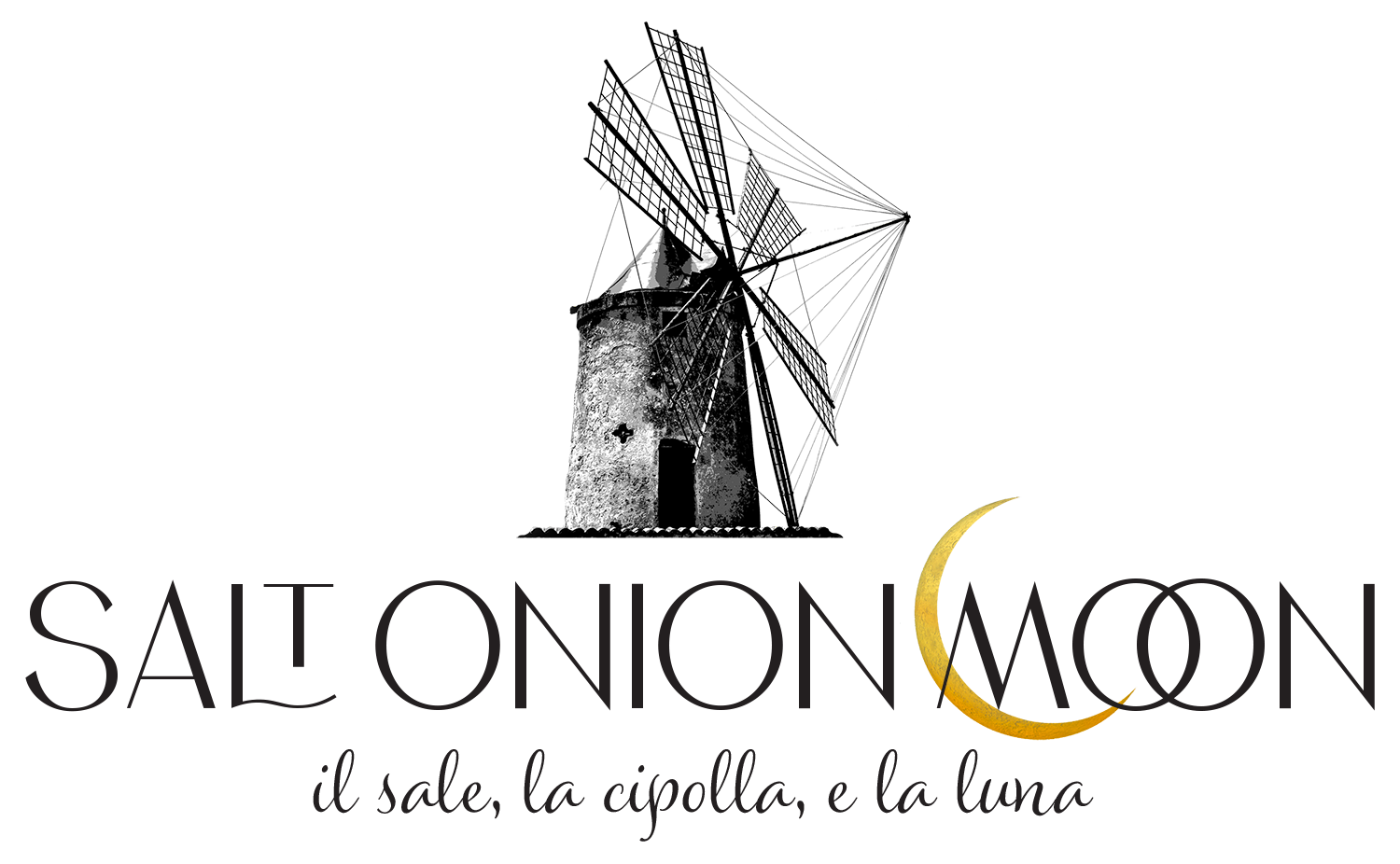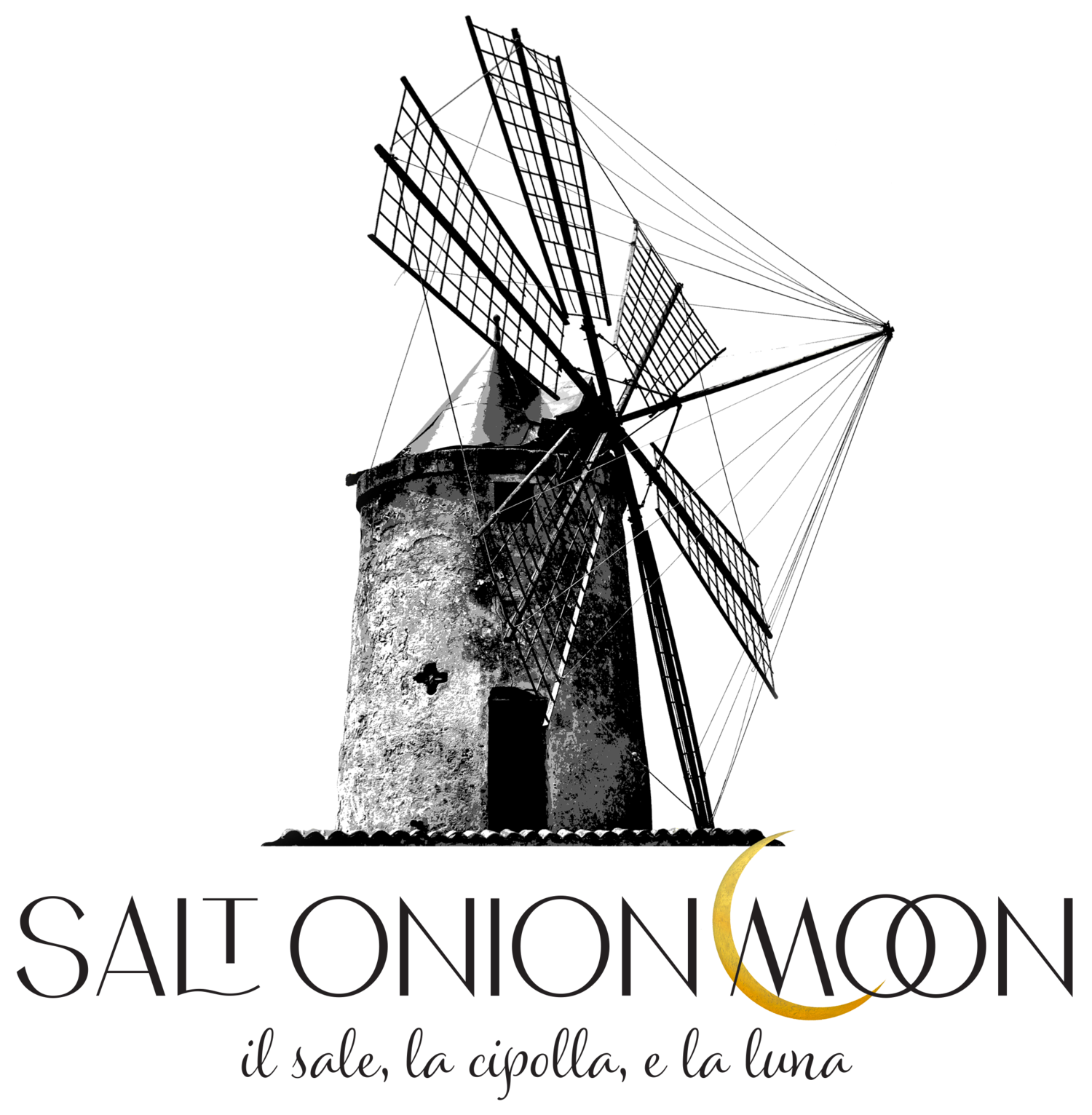Peposo
Ahhhh…
We’re back in Tuscany!
I have probably traveled most extensively in the small towns throughout this picturesque region. From Lucca and Florence to the entirety of the Chianti area, including Greve, Castellina, Radda and Gaiole,. My husband Jeff and I have meandered our way around the Sienna area and down into the land of Montepulciano and further over the border into Umbria and the ethereal cities of Orvieto and Civita di Bagnoregio.
My family is not Tuscan. However, next to my spiritual city of Venice and the Eternal City, Rome, the latitude from La Spezia through Lucca and Florence is my favorite. It looks with hungry eyes eastward into the delectable food region of Emilia-Romagna - Parma, Modena and “La Grassa” (or “the fat”) - otherwise known as Bologna.
the beautiful walled city of Lucca
Tuscan food is delightfully saucy, filled with fruit, cannellini beans, rosemary, Sangiovese grapes, porcini mushrooms, hearty cheeses and the famous Bistecca alla Fiorentina, made from the pedigreed Chianina cow. This is one of the oldest cattle breeds in the world. The beloved cows are treated with respect and live beautiful lives munching on the verdant Tuscan grasses.
Not every meal eaten is the expensive Bistecca alla Fiorentina. The Tuscans can trace their ancestry back to the Etruscans. There is a simplicity with their cuisine that is earthy. The depth of flavors come from the bounty of the famous terroir. These Tuscan cooks know how to get the most out of the least, as they have been working with and honoring the land from the 5th through the 8th century BCE. Take, for example, the Italian riff on the famous Mediterranean Shakshuka: Acquacotta. Acquacotta traditionally consists of tomato sauce, herbs, olive oil, root vegetables, old bread and eggs. All simple ingredients that, when mixed together, create an alchemy that borders on the otherworldly.
Simple. Semplice.
Of course, I have a story.
I was taking the train from Florence to Lucca. I had some extra time before the train left so I thought I’d take the eight-minute walk to one of my favorite places to grab some lunch: the Mercato Centrale and Tosca Restaurant.
Tosca is one of those places that you always walk by and say, “Someday, I am going to go there.” Today was that day. I had two hours. If you have ever been to any of the Eataly locations around the world, you will find it similar. It is Italian food but à la marche, from the French which basically means “walking.” There are vendors everywhere. You walk around to find what you like and pay for it at the register nearest you. Then you may choose any open area to sit and eat.
I was ready. I dragged my overly-packed suitcase out into the busy street and got my bearings. I took a left out of the building and aimed for the famed market. It was busy and a little difficult to navigate with my suitcase because of all the people. I’m not going to lie: I got some angry looks. But I kept to the game plan until I arrived at Tosca.
As I looked at the menu, I saw a dish I had never heard of: Peposo. I did, however, understand the Italian description of “beef with wine, garlic and lots of black pepper simmered for several hours.” I was in.
The Peposo arrived served on a bed of creamy, cheesy polenta. It was a dark, deep red from the wine and cracked pepper. It almost looked like a sticky glaze you might get on your General Tso’s Chicken. I had already ordered a glass of Chianti.
It definitely had some spiced heat to it, spinning about on my tongue and lightly on the roof of my mouth. The beefy wine reduction was the headiest thing I had ever eaten. My mother made stews all the time but they never came close to this concoction.
The garlic was whole and when I touched it with my fork, it turned immediately into a paste that I mixed into the stew. This Peposo had carrots, celery, bay leaf and some thyme sprigs as a garnish. I ate it ravenously with the crusty bread that came with it.
As I slowly dipped each piece of meat into the polenta and placed it into my mouth I thought, “I must make this.”
My friends in Lucca told me later Peposo is usually made more simply with only a bottle of red wine, beef chunks with good marbling (like a cut up chuck shoulder roast), garlic and cracked black pepper.
Now this delicious dish is the first stew in my repertoire. I think you will love it as much as my family does. My version includes onion, carrot and celery as well as garlic, orange peel and bay leaves. The traditional recipe is at the bottom of this post.
Buon appetito a tutti!
I love mise en plus…
Peposo Toscano dalla Terra
Thom’s version
2 lbs. (1 kg.) beef chuck roast, shank or stew beef cut into 1 – 2” cubes. You can buy beef chuck already cut for this as well.
1 bottle red wine (Here’s an opportunity to taste the true flavor of the region by using Chianti or Sangiovese, however any decent red wine that you would drink will work here.)
1/2 cup marsala wine
6 whole medium to large garlic cloves, peeled and lightly smashed with your hand or knife
1/4 cup dried porcini mushrooms
1 medium onion cut in thick chunks
3 large, peeled carrots cut to pieces 2” long
4 ribs of celery sliced in half then cut to a large dice (The leaves are good here, coarsely chopped.)
Peel 1 small orange
3 fresh bay leaves, banged with the butt of your Chef’s knife or 4 dried bay leaves unbanged, please!
4 sprigs fresh thyme
1 sprig rosemary (about 5”)
3 tablespoons cracked black pepper
3 teaspoons sea salt flakes or kosher salt
3 tablespoons extra-virgin olive oil, enough to coat the bottom of your stew pot
Heat your Dutch oven on medium-high heat
While it is heating, take 2 teaspoons of the salt and season the meat. Give it a good massage.
Once the pan is hot, add the olive oil. Brown the beef in batches searing some sides but trying to at least have one or two good sides of caramelization. Do not move the meat around. Let it have a chance to caramelize. Wait at least a minute then check. You might have to move pieces around to get them over the hotter spots in the pan to get better caramelization.
Do not crowd the pan. You might need to do 3 or 4 batches with 2 lbs. of beef. If you put too much in without allowing space you will steam the meat instead of caramelize it. Leave space between each piece and you’ll be okay.
As you get the sear and color you like, place the meat on a plate to rest while you deglaze.
Once you are finished searing the meat, turn the heat up and add the marsala wine. Take a wooden spoon and scrape the bottom of the pan to deglaze and pick up the “fond” at the bottom of the pan.
(see quote below)
“Fond is French for “base” and commonly refers to the browned bits and caramelized drippings of meat and vegetables that are stuck to the bottom of a pan after sautéing or roasting. It is retained as a source of flavor and deglazed with liquid and aromatics like onions and garlic”
Next, turn the heat back down to medium high and add garlic, the rest of the salt and the pepper, dried porcini, carrots, the squashed cherry tomatoes, celery onion and the orange peel, to your pot. Add your meat, including the juices. Then, add the thyme, bay leaves and rosemary on top. Gently tuck them into the meat. We want them sticking out a little so they perfume the inside of the pot when the lid is on.
Now pour the entire bottle of red wine over the meat and vegetables.
Cover the pot with a lid and simmer the Peposo on a medium-low heat for 1.5 hours. Set your timer.
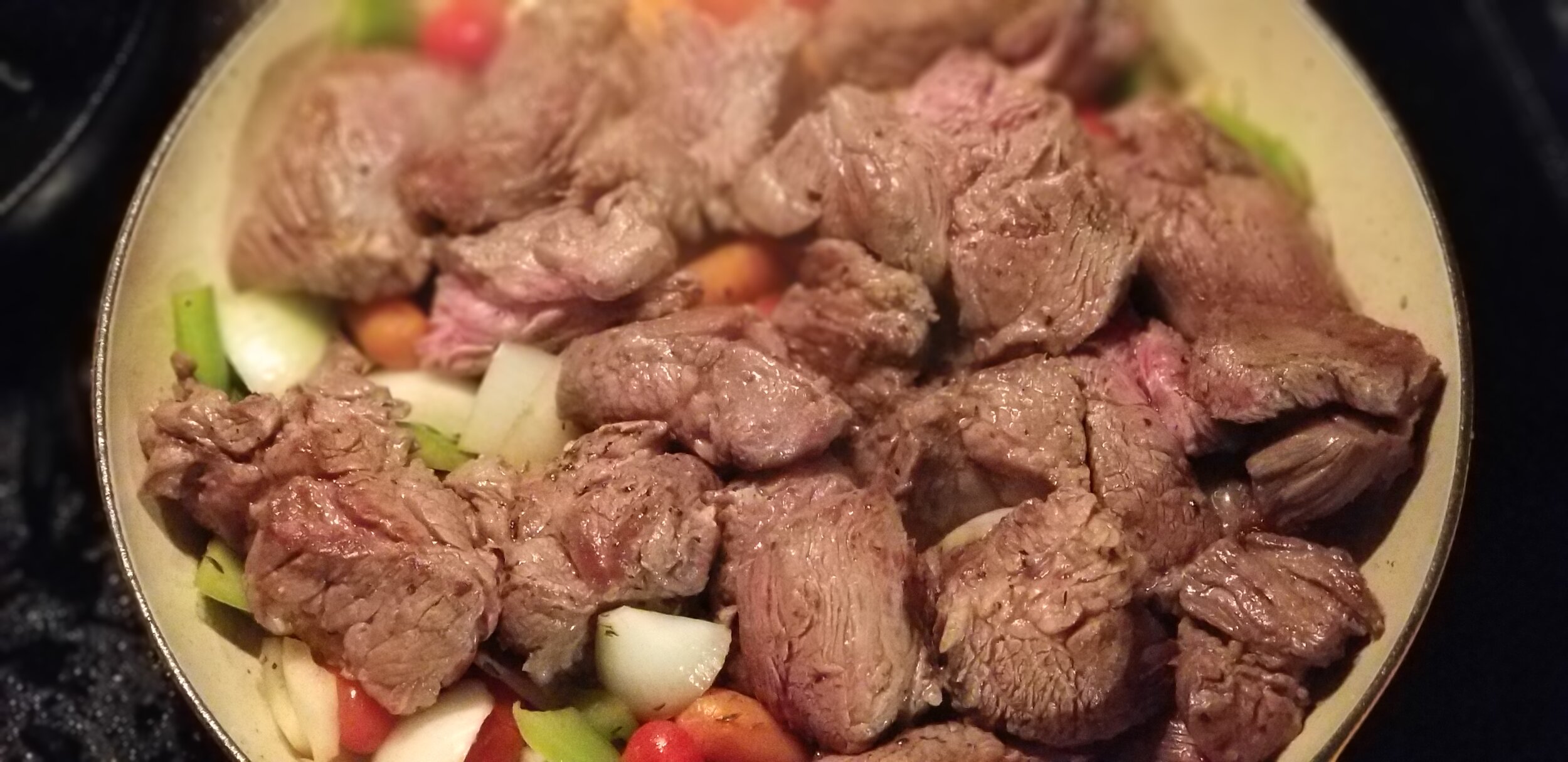
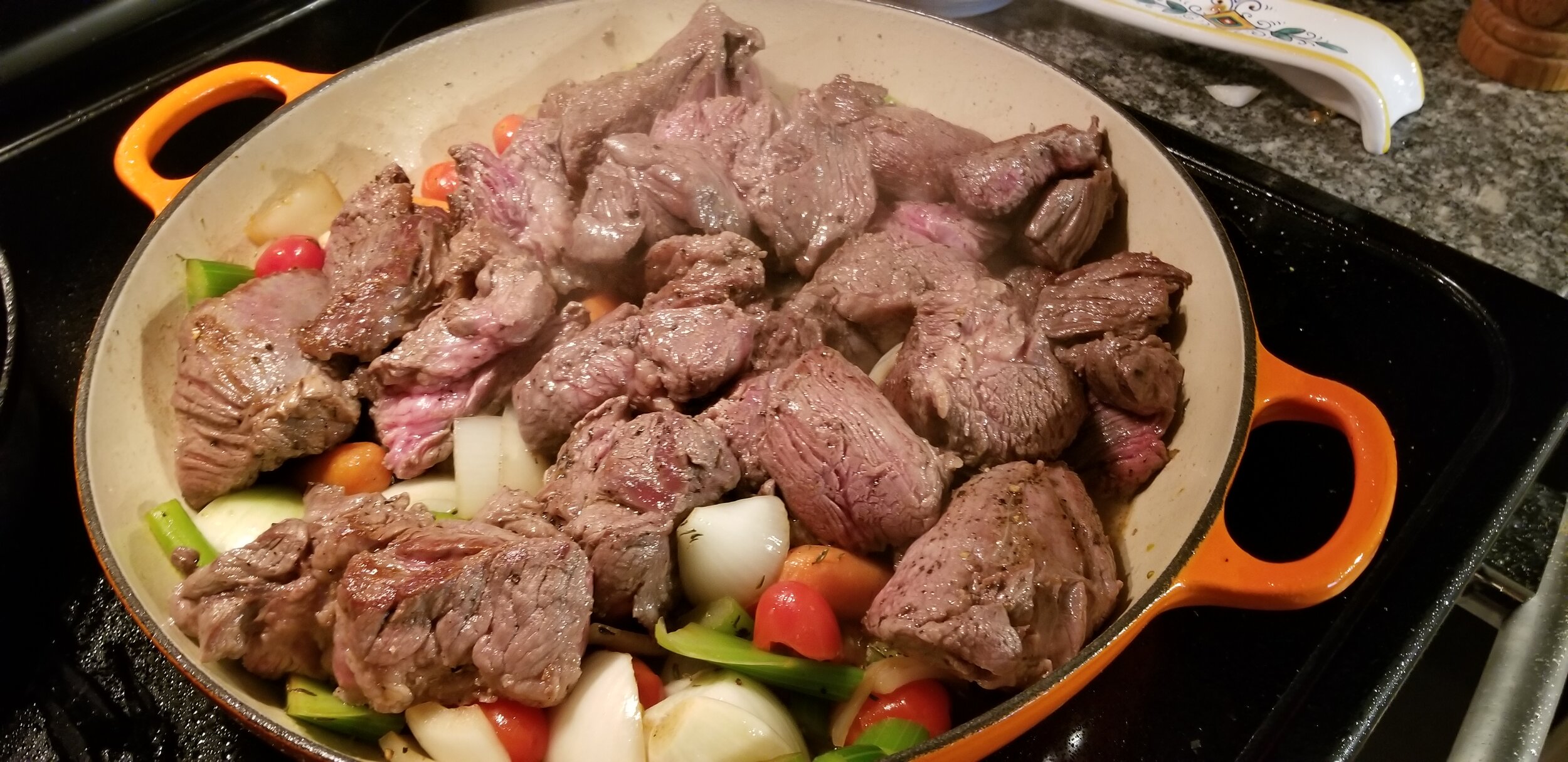
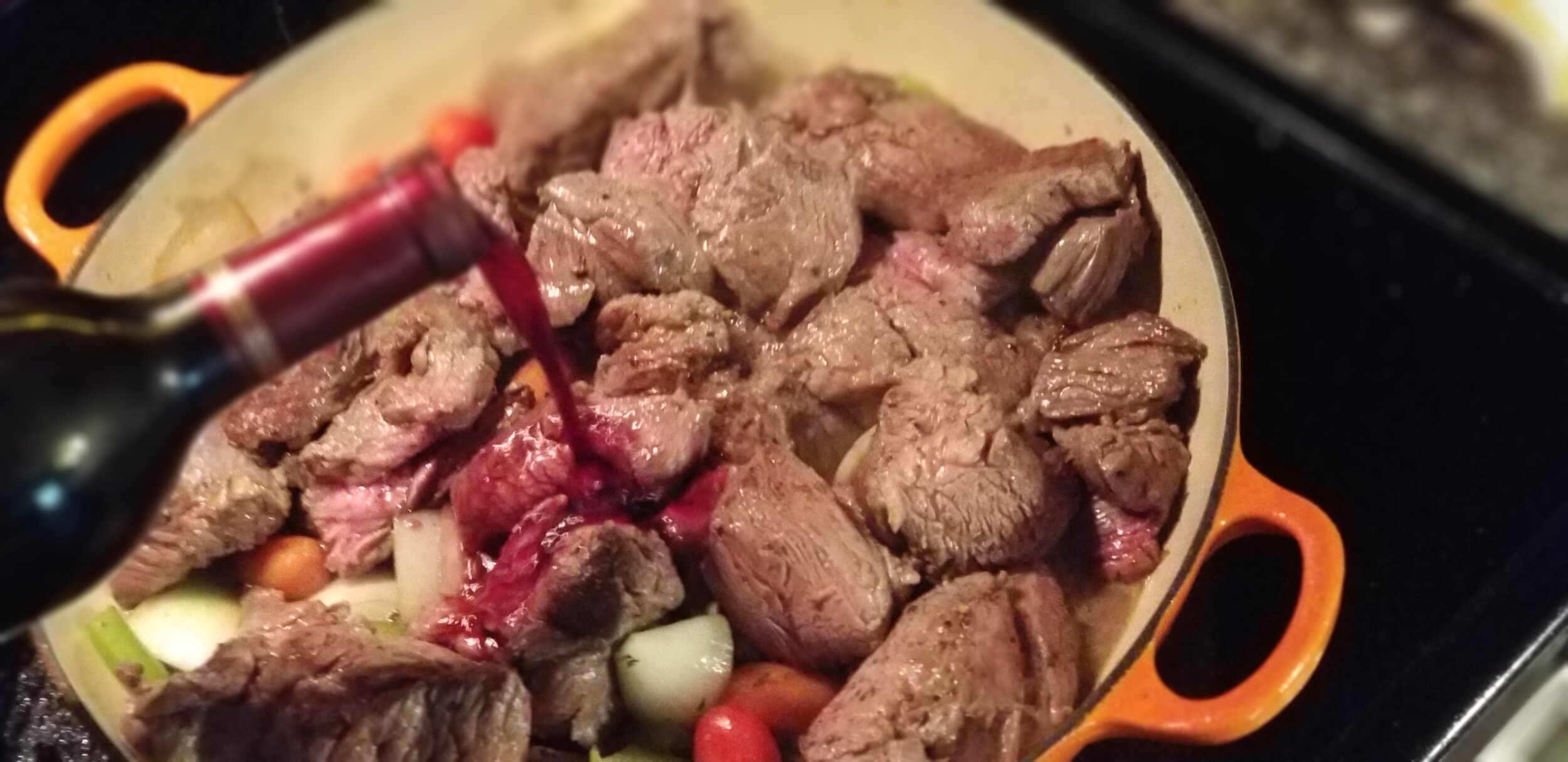
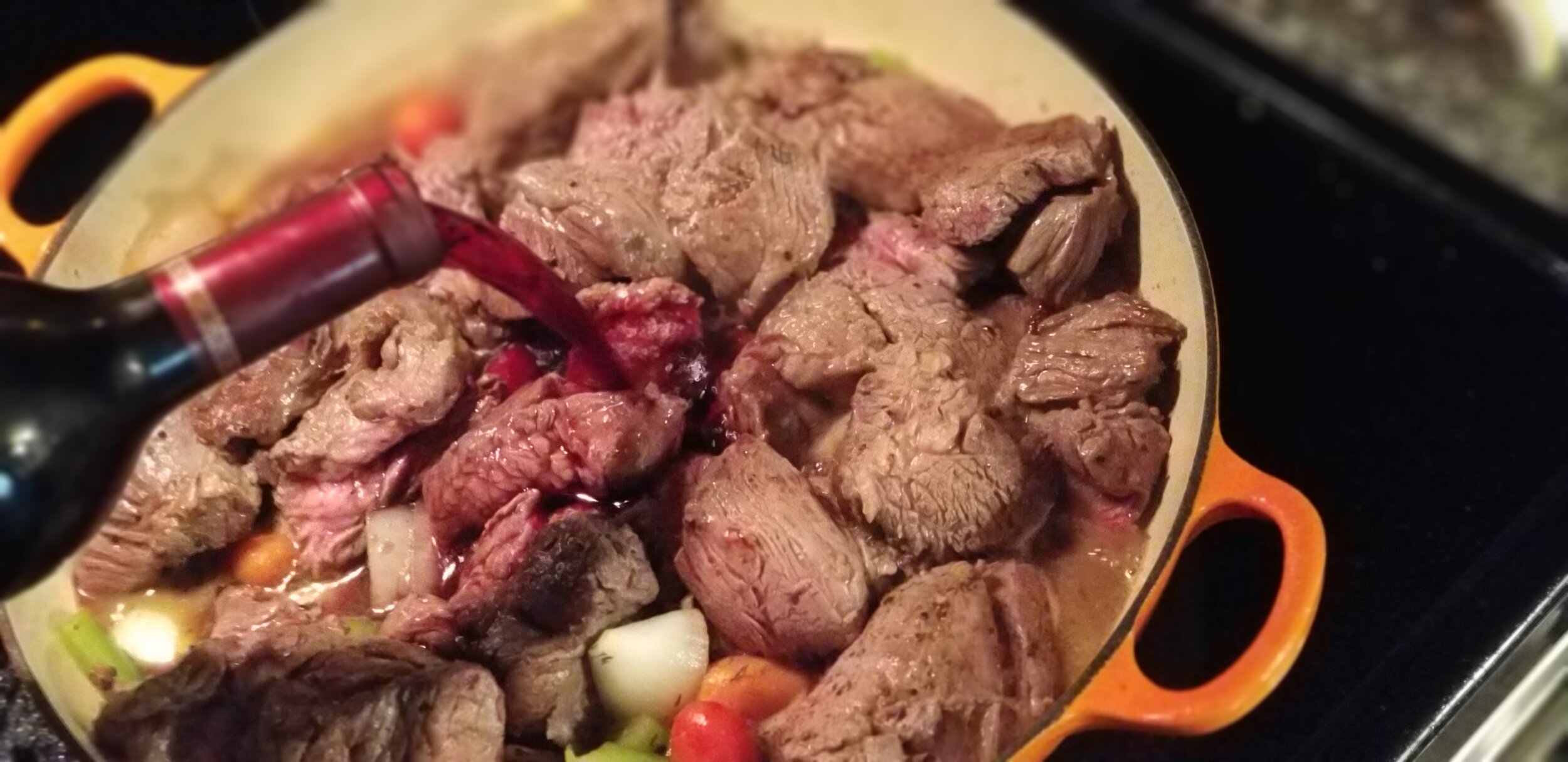
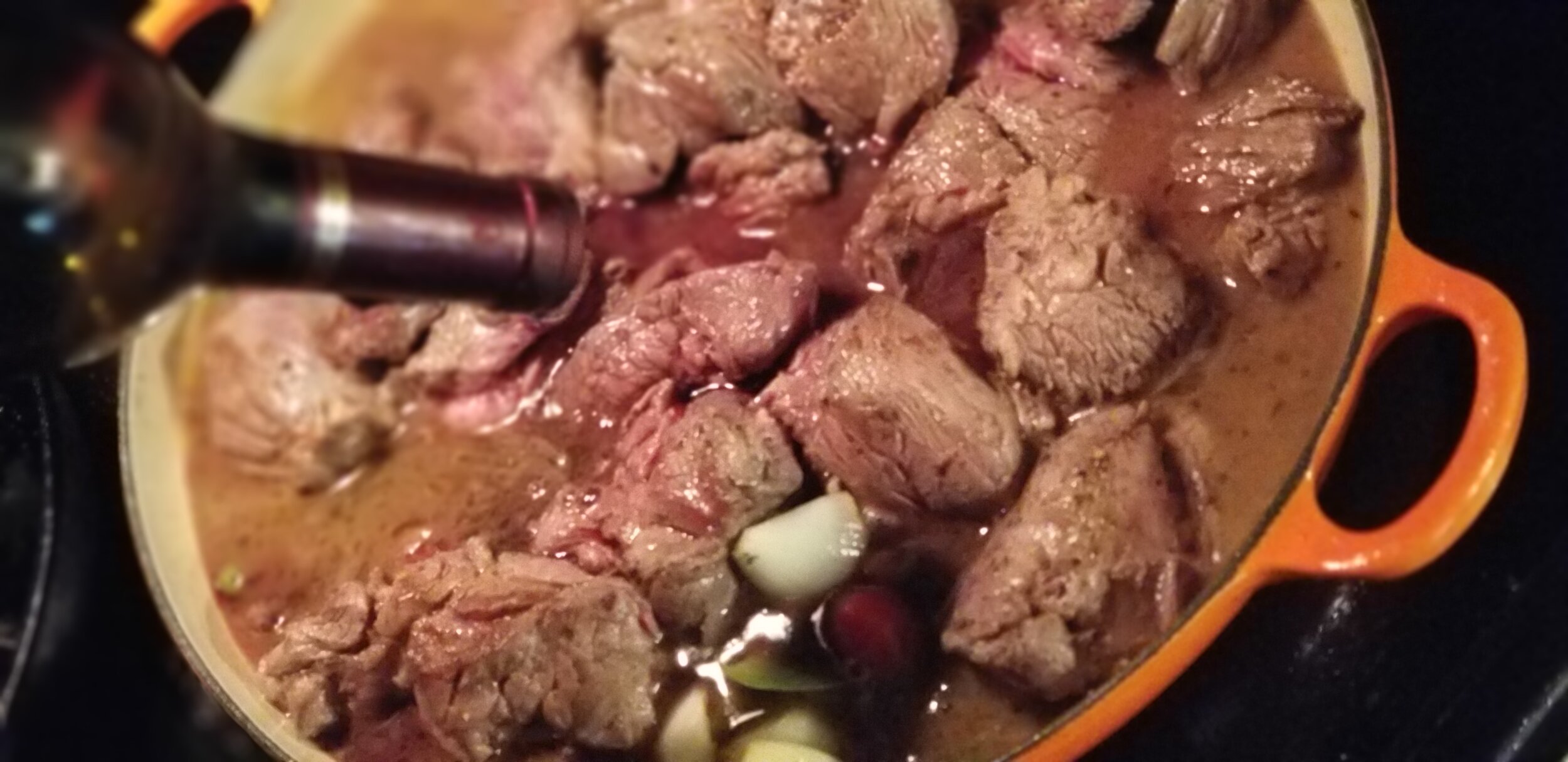
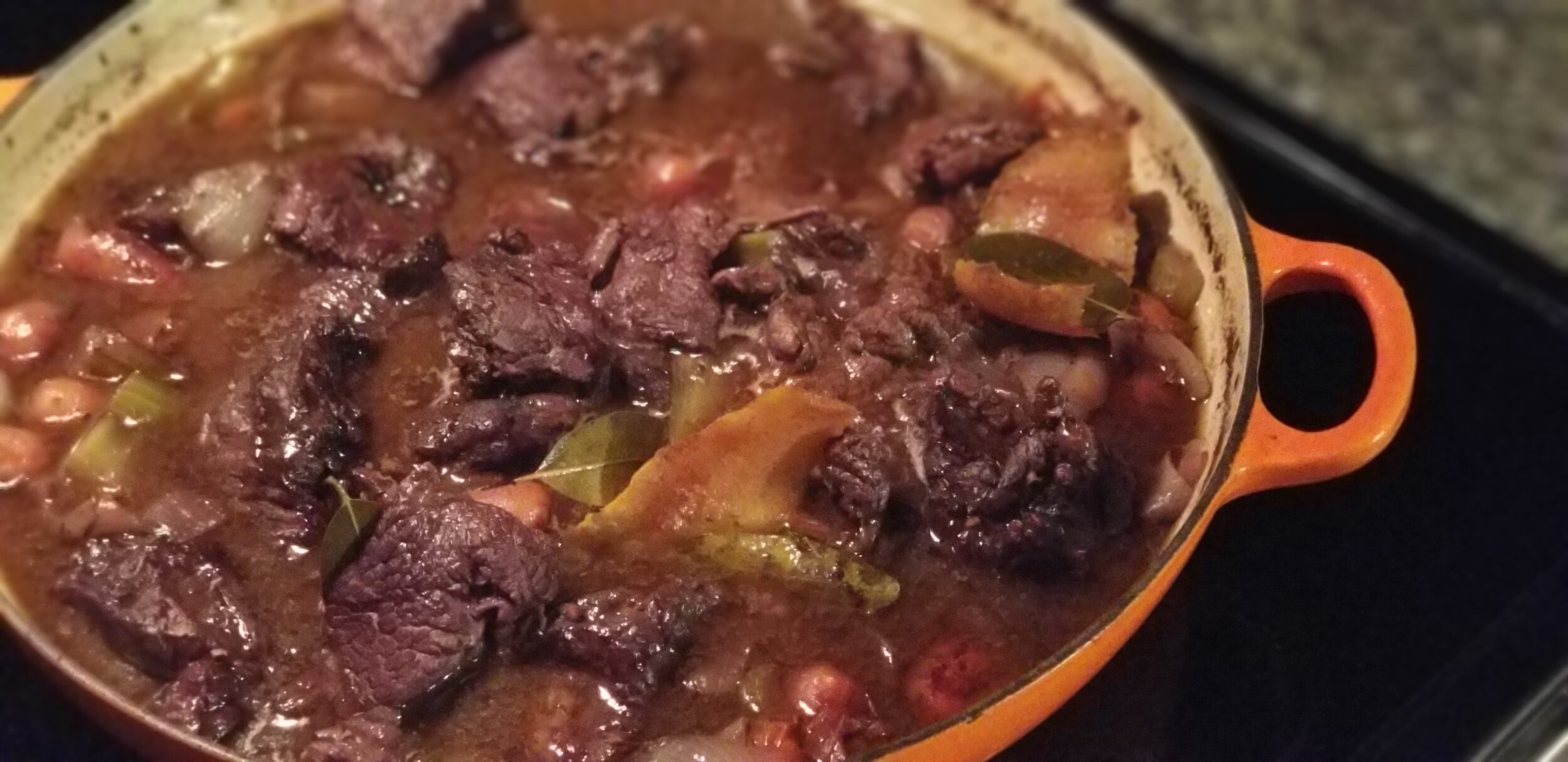
Next, uncover the pot and continue to simmer for another 1.5 hours until the liquid has reduced. Check it every so often and give it a stir to make sure it doesn't stick to the bottom of the pan. This also ensures the top of the meat does not dry out with the lid off.
Here is where you must use your own judgement. I like my sauce to be a little thicker, so I reduce until it coats the back of a spoon. The beef should be very tender but not completely falling apart. Serve with creamy herbed polenta (thyme and rosemary would be great) and some wonderfully crusty bread is a must!
If you want to “fancy this up” for guests, make sure you remove the herbs, bay, thyme, rosemary and cooked orange peel. You could choose to garnish this with a sprig of thyme or rosemary or even an elegant peel of an orange.
Otherwise, if you are simply cooking for family and they enjoy a little rustic country cooking: leave it all in!
Serve it in a warmed plate on a bed of creamy polenta.
Here is my goto recipe for very simple polenta. Lidia Bastianich Polenta Recipe.
This recipe serves 4 people comfortably.
Now here is the traditional recipe…
Peposo
Traditional version
2 lbs. (1 kg.) beef chuck roast, shank or stew beef cut into 1 – 2” cubes. You can buy beef chuck already cut for this as well.
1 bottle red wine (Here’s an opportunity to taste the true flavor of the region by using Chianti or Sangiovese, however any decent red wine that you would drink will work here.)
6 whole medium to large garlic cloves peeled and lightly smashed with your hand or knife
2 tablespoons of cracked black pepper
3 teaspoons sea salt flakes or kosher salt
3 tablespoons extra-virgin olive oil – enough to coat the bottom of your stew pot
A covered, heavy-bottomed pan like a Dutch Oven with a lid
Prepare you Peposo the same as the recipe above, just eliminating the addition of the vegetables, fresh herbs and marsala deglaze. Just give the bottom of the pan a good scrape witch your wooden spoon or spatula after you pour the wine in.
Simplicile.
Until next time, Amici!
